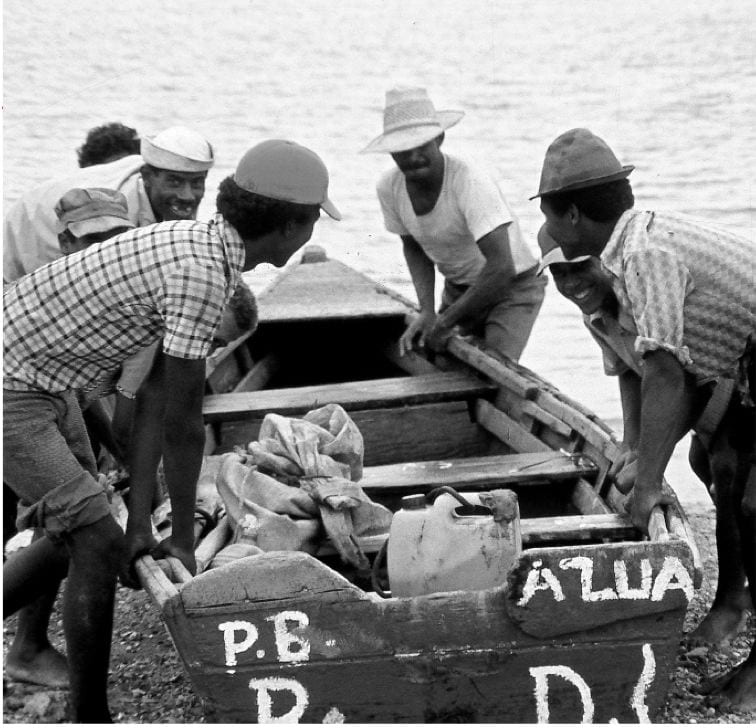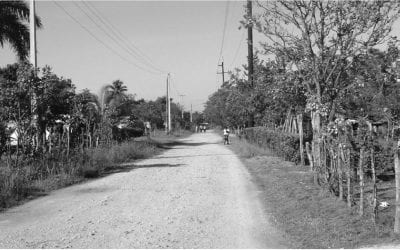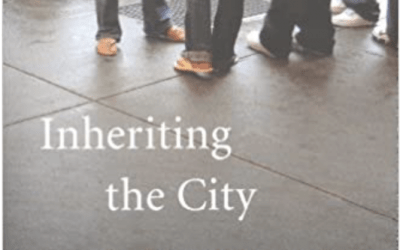In the Shadow of JFK
One Peace Corps Experience
I am often asked about the Peace Corps by students and recent graduates. The most frequent questions are, “why join?”, “what did you do?”, and “what has it meant for your career?” Here is my story.
My earliest recollection of international curiosity was in the fourth grade when Sister Margaret Thomas described her experience as a recently returned missionary in Bangladesh. In high school, my sister Mary went to Peru on a study abroad program and later became a Fulbright Scholar in Spain. Then in college, I took a summer job with a former Peace Corps volunteer recently returned from Ethiopia. But like many of us who joined the Peace Corps in its early years, the draw of international experience was influenced by many factors. It was the economy when I graduated from college that pushed me over the edge. In the late 60s and early 70s the country was in the grips of the Viet Nam War and stagflation. Energy prices were going through the roof and the job market was grim. The only job offer I had in my senior year was working for Colgate Palmolive selling laundry detergent—not an attractive future for a newly minted Wharton grad. So, remembering my friend who had been in Ethiopia, my sister, and my fourth grade teacher, I went to Washington in the spring of my senior year and visited Peace Corps headquarters. The two openings in my field were in the Philippines and the Dominican Republic. After a quick look at a world map, with images of palm trees and beaches materializing along with the chance to learn Spanish, the decision was made. By August that year I was in Santo Domingo.
I was one of 12 new volunteers assigned to work with cooperatives. We began by spending three months learning Spanish. During this time we became a cohesive group supporting one another in our classes and sharing our experiences trying to get along in a new culture. After we passed the minimum Spanish level we were shipped out to our sites. My site, Los Negros, was a fishing cooperative on the southwestern coast three hours from the capital in one of the poorest and most arid regions of the country. There were no palm-lined beaches here, just an abandoned port and a few wooden fishing boats. The central Peace Corps office in Santo Domingo advised me to live in the town of Azua, the provincial capital, and to travel each day to Los Negros, 15 miles away, about 30 minutes on my Peace Corps-issued Honda 90 motorcycle. After a month, the daily commute was becoming tedious and I was making little progress with the cooperative. One Sunday afternoon, I was sitting in a gas station waiting for my motorcycle to be filled up, when a truck crashed into me, breaking my pelvis.
That truck knocked some sense into me. After a month recuperating in the hospital, I asked myself the same fundamental question everyone needs to ask if they are to accept challenges they face. The question was what exactly did I want to get out of this experience?
It was clear that I had joined the Peace Corps with a modicum of altruistic motives and had pictured myself living on an island near the ocean and working to advance the livelihood of a community. I then decided to move out to Los Negros, get to really know the forces moving the local economy, and do something to influence the community.
I returned to the cooperative, going straight to the president to ask about housing. The president, Mingo, discouraged me, saying the town was too dangerous for an American. I continued to ask around only to be told that there were no empty houses. I had noticed an abandoned thatch roof house on the edge of town that needed some major work. To my disappointment, the owner would not rent it, so I offered to buy it. The $100 price tag was probably too high, but I accepted enthusiastically.
From there I was able to work more closely with the fishermen. But, I had to reduce the distance between us even more, so I asked if I could go fishing with my now friend, Mingo. The day began at 3 a.m. with a shot of high octane coffee mixed with cinnamon and highly laced with sugar. We gathered up a tank of gas, the 9 hp Evinrude motor, and other assorted fishing equipment and walked the dark path toward the small skiff named for Mingo’s mother, Doña Francisca. We pushed off, connected the motor, and took off clearing the harbor and out into the open sea. Our destination was a bank of coral where Mingo has set lobster traps. At sunrise we arrived and began pulling up traps, emptying them, re-baiting them, and returning them to the bottom of the sea. Our haul was mostly second class fish and a few lobsters. After a grueling morning, by noon we headed back to the harbor. On the beach a buyer met us and purchased our catch for about $10, enough to cover the gas and to buy food and rum for another day. This was a good day. On a bad day, if the catch was even worse, the buyer became a lender at highly usurious rates. In a true sense the fish buyer owned the fishermen of Los Negros.
This experience was repeated countless times in Los Negros. As I participated more and more, my confidence and Spanish grew, and I began to do more work with the cooperative.
One night, I organized a meeting of interested fishermen. I had borrowed a movie and projector from the U.S. Embassy to show the 1969 NBA finals between the Celtic and the Lakers to be sure to draw a crowd. After the game, in my best motivational style, I gave a speech outlining how each member could save and pool their money if only they would reduce the regular afternoon rum parties. We had to decide to do something about the low prices and usurious loans we received from the fish buyer on the beach. I concluded by challenging the members saying that they would only be successful if they would get some cajones. Of course, I meant cojones, but my Spanish did not yet clearly distinguish “a” and “o”. The fishermen had a huge laugh and we agreed to move ahead. We set up the books for the cooperative and established a direct market link with a hotel in Santo Domingo. The experience was successful and worked well until someone stole our whole stock of lobsters. But, it was a successful demonstration of what could be accomplished as a group.
Armed with a new sense of accomplishment we set out to move beyond the cooperative. The school in Los Negros was a dilapidated 12 by 12 shed totally inadequate to accommodate the town’s 80 students. We decided that the best thing we could do for the community was to build a school. We applied for a grant and enlisted an army of volunteers and built the only cinder-block building in the town. The school was inaugurated five months after we began construction and became the main community center.
The two years in the Dominican Republic passed quickly. Following my volunteer time, I was offered a job in Peace Corps headquarters in Washington. While there, I met my wife Julie, who decided to become a volunteer. I made the decision to sign up again. We went to Ecuador to work for Partners of the Americas in Quito. Our shared job was to develop programs for the partnership. During our two years we created two successful projects with vegetable producers and bee keepers.
When I look around at all the people I have run into in the Peace Corps one common denominator is the positive effect the Peace Corps has had on our careers. For example, Senator Chris Dodd, who preceded me in the Dominican Republic by a few years, became Chairman of the Senate Western Hemisphere Subcommittee where he had an enormously positive effect on the Central American peace process. From my group, most have entered international careers or have taken enormous advantage of their language ability. One is a senior vice president for external relations for a leading international energy company, another is an international labor negotiator for the one of the largest international mining and construction companies, another heads development efforts for an international education and training company. I have had a hugely satisfying career developing and implementing scholarship and training programs for future leaders in Latin America and the Caribbean. These are more than simple international careers. In each case the experience in the Peace Corps has shaped a responsible humanistic approach to our work where we have been able to extend our work to benefit others.
Winter 2009, Volume VIII, Number 2
Related Articles
Editor’s Letter: The Sixties
When I first started working on this ReVista issue on Colombia, I thought of dedicating it to the memory of someone who had died. Murdered newspaper editor Guillermo Cano had been my entrée into Colombia when I won an Inter American Press Association fellowship in 1977. Others—journalist Penny Lernoux and photographer Richard Cross—had also committed much of their lives to Colombia, although their untimely deaths were …
The True Impact of the Peace Corps: Returning from the Dominican Republic ’03-’05
I am an RPCV: a Returned Peace Corps Volunteer. For me the Peace Corps was an intense life experience, above anything else. As I continue to reflect on it, I am struck with the many and varied ways in which it continues to affect my life. As a PCV in the Dominican Republic from September 2003 to November 2005, I lived, worked, and learned in a small sugar cane-dependent community two hours outside of Santo Domingo…
A Review of Inheriting the City: The Children of Immigrants Come of Age
As an immigrant trying to understand urban diversity here, I come back time and again to the U.S. writer E.B. White’s often-cited passage in Here is New York (1948) in search of useful clues. “There are roughly three New Yorks. There is, first, the New York of the man or woman who was born there, who takes the city for granted and accepts its size, its turbulence as natural and inevitable. Second, there is the New York of the …




